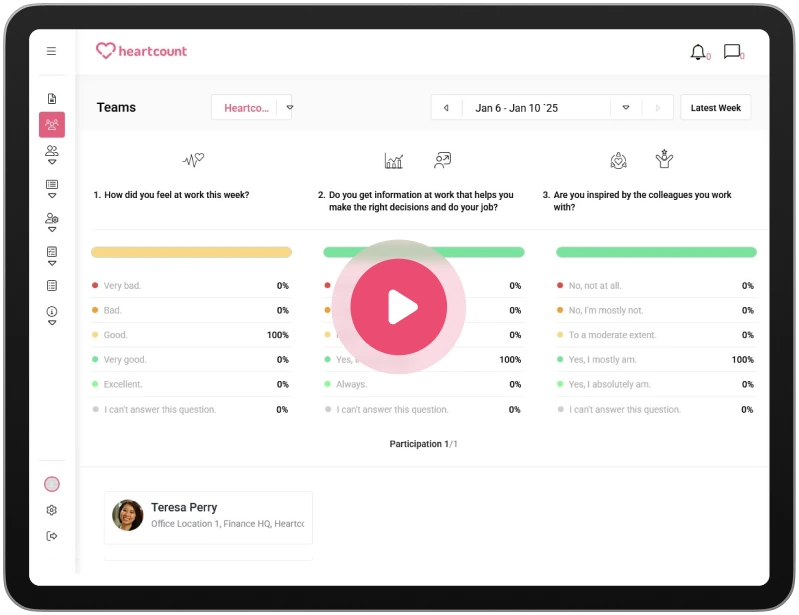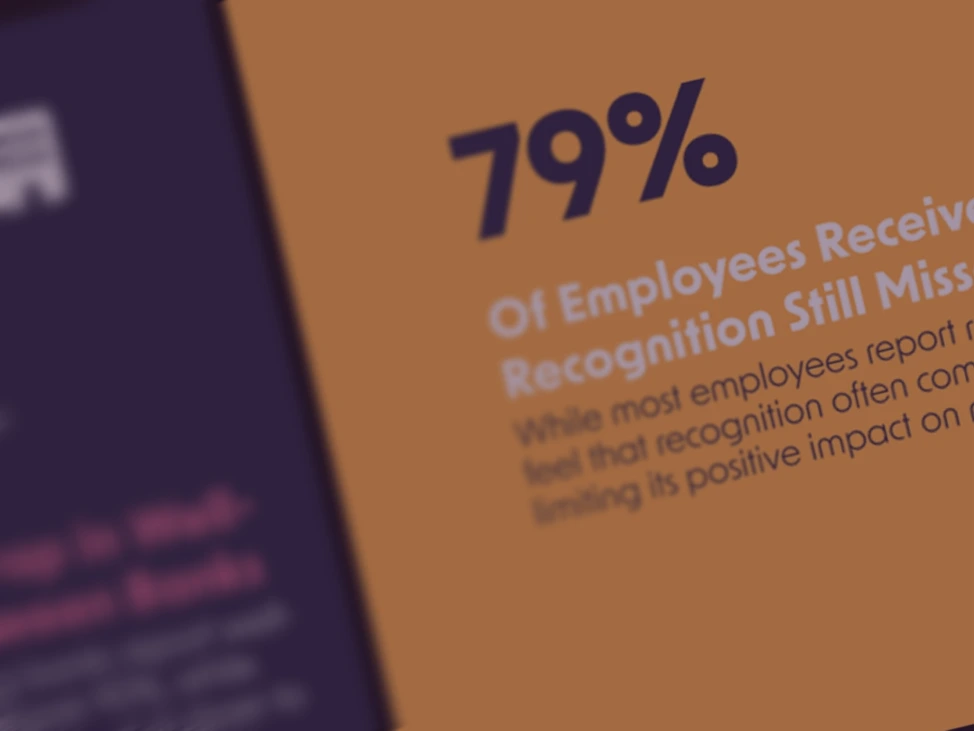How micromanagement stifles creativity and growth

Whether they’re hovering over employees’ shoulders as they work, take every opportunity to point out the staff is taking “too long breaks,” or insist on getting screenshots to “ensure” every task a remote worker does is correct, the micromanager is far from the most popular person among employees, in-office or remote.
Instead of helping, as micromanagers believe, micromanagement stifles creativity and growth and leads to an unproductive workforce.
-
1.What is micromanagement at work?
-
2.How to recognize a micromanager?
-
3.Micromanagement negative effects
-
4.How does micromanagement affect business in general?
-
5.Strategies for dealing with micromanagement at work
-
6.Allow your employees and organization to thrive without micromanagement burdening them
Whether they’re hovering over employees’ shoulders as they work, take every opportunity to point out the staff is taking “too long breaks,” or insist on getting screenshots to “ensure” every task a remote worker does is correct, the micromanager is far from the most popular person among employees, in-office or remote.
Instead of helping, as micromanagers believe, micromanagement stifles creativity and growth and leads to an unproductive workforce.
What is micromanagement at work?
Micromanagement is a management style or philosophy in which the manager or supervisor exercises extreme control over the employees’ responsibilities and tasks, including the most minor details.
In their defense, such managers will say they need to “take control” to achieve the goals set before the team. In reality, micromanagement does the opposite and creates demotivated and disengaged employees.
How to recognize a micromanager?
For 73% of workers, micromanagement is the most significant “red flag,” while 46% would leave their job because of it. Fortunately, the micromanager is relatively easy to recognize. Especially as they usually exhibit the following common traits and behaviors:
- Excessive control over tasks: Micromanagers “love” to keep all control for themselves, even going into minor details and leaving employees with zero autonomy. In this restrictive environment, employees are reluctant to take initiative or show creativity.
- Low trust in employees: This type of manager thinks, “I have to do everything myself.” They often voice this every chance they get. They have very low trust in their employees’ ability to do something, so they don’t empower them. As a result, employee morale is ruined, and motivation is gone, eventually leading to poor performance.
- Not listening to feedback: Telling a micromanager that he is one doesn’t work. They usually won’t listen as they believe their way is the only right way. When this becomes the case, open communication and collaboration go out the window.
- Short-term over long-term goals: Finally, the micromanager doesn’t think long-term, only short-term. They are completely focused on burying their heads in goals immediately in front of them. This makes them and the team they lead become too rigid and unable to respond to market or industry changes.
COLLECT
Micromanagement negative effects
Micromanagement has multiple adverse effects on employees, including physical, psychological, and social. It also leads to a lack of engagement, and employees’ work-life balance often becomes skewed, causing them to neglect exercise, diet, etc. As a result, employee production suffers, and employee absenteeism grows.
Micromanagement physical effects
Employees who have to deal with a micromanager are subjected to extra stress and pressure, which may lead to symptoms such as headache, fatigue, sleep disturbance, etc. Additionally, the high pressure caused by micromanagement completely sidelines employees’s work-life balance, causing them to neglect diet and exercise.
Micromanagement creates an inflexible and high-stress work environment, increasing employees’ risks of cardiovascular problems. None of this is naive, as micromanagement can cause sleep deprivation fatigue and impact the development of depression. On the other hand, flexibility among IT and long-term care workers showed that more flexibility decreases employees’ cardiometabolic risk score (CRS).
Reddit is full of workers from all around the world, from widely different industries sharing their experiences, challenges and consequences they had to overcome and heal after working with micromanagements.
For example, one video game artist was working for an online international company and was dealing with bosses chiming in at 2 AM demanding changes for the day. That meant they had to have the computer or phone “on” 24/7 so notifications could go through, and they were expected to work overnight to fix any problems, causing them stress and disrupting their sleep.
Micromanagement psychological effects
Being under constant scrutiny makes employees feel inadequate and diminishes their self-confidence. In an environment like that, employees “walk on eggshells” and don’t take initiative, as the supervisor watches them “like a hawk.”
Another employee, who was working in a senior management position, reported she had a boss who wanted to be CC’d on everything, attend ALL their meetings, and have them run everything by her before approving it. Naturally, they felt they lacked any trust and autonomy, which caused them to feel degraded on a daily level.
Micromanagement social effects
Micromanagement creates a negative work environment where nobody wants to collaborate and actually work together. Teamwork, employee relations, and solidarity in the workplace are out of the window in this environment. Instead of a positive and supportive work environment, a toxic atmosphere develops.
The only person who gets something out of this is the micromanager. Usually, this is a power trip for such managers to feel more important and to put others down. They often deliberately instigate a toxic atmosphere and ensure employee relations are strained. They also ensure that employees feel inadequate and, therefore, less likely to stand up for themselves or others.
A CEO of a financial loan company insisted on changing the team’s already established goals mid-sprint and using a time-tracking tool. Because the goals were changing in the middle of the sprints, it was impossible to reach them, and the tool gave false indications of what the individual team members were doing to contribute to the goals. This created fear within the team and influenced pinpointing and blaming, eventually influencing turnover.
Micromanagement effects on employee engagement
Finally, micromanagement is the antidote to employee engagement. Employees feel they lack autonomy and have no sense of ownership because their supervisor wants to control everything they do.
As we noted, micromanagement erodes trust and causes employees to feel undervalued and less motivated. This makes them less likely to take the initiative or work at all, as they don’t see the purpose of even trying to contribute.
Over time, micromanaged employees experience burnout, become emotionally exhausted, and work less effectively, affecting overall performance. Multiple studies have shown this is more prevalent among mid-level employees (54%) than entry-level workers.
How does micromanagement affect business in general?
Micromanagement also affects the organization as a whole. Its stamp can be seen in the difficulty of retaining talented employees, hindering growth and innovation, lack of leadership development, and, as a cherry on top, decreased productivity.
- Employee retention: When an overzealous manager constantly monitors and controls employees and removes employees’ autonomy and creativity, it inevitably creates a sense of dissatisfaction. As employees feel undervalued and feel their voices aren’t heard, they usually find that quitting is the only way out. In one micromanagement survey, 62% of respondents said they had considered changing their jobs due to being micromanaged, and 32% actually changed their careers.
- Hindering growth and innovation: Micromanagement stifles creativity and growth, affecting employees and the organization in general. When the workforce starts to fear making mistakes and is unwilling to take risks, the company soon becomes stagnant.
- Lack of leadership development: Micromanagers don’t delegate tasks. They give no autonomy to others in performing tasks, as they want to control everything (and often take all credit). Of course, this isn’t an environment that can breed effective leaders for the company.
- Decreased productivity: Finally, combine all of the above, and the result can only be one—reduced productivity. Not only are employees demotivated and disengaged from making a genuine effort (which will probably be stomped on), but the organization becomes so rigid and inflexible that it’s no longer capable of growing or adapting to market and industry changes around it.
If the company’s focus is short-term, prioritizes administrative tasks, acts reactively rather than long-term, prioritizes development, and is proactive, that’s usually good soil for micromanagement to grow. Strategic human capital management (SHCM) helps businesses align employees and organizational goals and focus on employee engagement, development, and retention.
Strategies for dealing with micromanagement at work
Luckily, not everything is lost when micromanagement appears in your organization. You can still fix the situation but must address the problem as soon as possible before it takes root.
Here are some strategies and advice for dealing with micromanagement at work and transitioning to effective leadership:
- Provide leadership training
Micromanaging usually occurs when the manager is insecure about his abilities and leadership skills. It’s a defensive mechanism for insecure managers.
However, an effective leader might be hiding behind the facade of a micromanager. They just need some help and leadership training to move away from excessive control and effectively manage their team.
- Set clear expectations for managers
Let’s say a new manager has joined your organization from another company, and they turn out to be a micromanager. Well, maybe that’s just how things were done in their old company.
You must define what management practices are allowed in your organization and what aren’t. Give the new managers clear guidelines and emphasize the importance of giving employees autonomy and listening to their feedback.
- Encourage open communication and transparency
A micromanager can “survive” for long despite their team falling apart because employees are too afraid to speak up. If the psychological, physical, and sociological effects become too much, it’s easier to just quit.
Of course, that doesn’t solve the problem for the organization as the micromanager remains and will continue to push their methods on the new batch of employees. Employees should have a safe space to provide feedback about their manager without fear of repercussions, and you could enable that through workplace transparency.
Employee feedback is essential for an organization’s success. A great example of how company culture improved with the implementation of open communication, better feedback opportunities, and transparency is the case of Erste Bank. They’ve used HeartCount’s automated pulse check surveys to gather feedback and address daily employee challenges.

- Focus on clear and transparent processes
Micromanagers tend to emphasize short-term outcomes, ignoring the need for clear and transparent processes within the organization. This often allows them to take away the employees’ autonomy and ownership.
Instead, the focus should be on establishing crystal clear processes and delegating responsibilities in a way that doesn’t allow micromanagers to blame employees for poor performance and take all the glory for themselves for success.
- Emphasize delegation
Perhaps the micromanager doesn’t even know how to delegate tasks to other team members. Be sure to emphasize the benefits of delegation and trusting their employees more.
Different resources and workshops focusing on delegation strategies and best practices will be tremendously helpful here. For example, companies like Align Today Group offer workshops, such as ATG’s The Art & Science of Effective Delegation, focusing on practical tools for improving delegation in the workplace.
- Support team development
Provide employee development opportunities and role-specific training to help your team build confidence. This will make it easier for managers to trust their teams.
- Address micromanagement in performance reviews
When reviewing the manager’s performance, don’t ignore micromanagement, no matter how small. Make sure to give clear feedback and suggestions for improvement.
Join forces with the HR department and ask them to organize specialized training or workshops on different management styles and benefits.
- Facilitate regular manager check-ins
HR should regularly meet with managers to review their leadership approach and address concerns regarding micromanagement. Ensure that relevant feedback is included on how managers can better empower their team.
- Encourage manager self-reflection
Again, managers are usually not even aware that they are being micromanagers. To them, taking all that control is the only way they know how to work.
Such managers need a good look in the mirror or 360-degree feedback, which can raise their awareness of micromanagement tendencies and motivate them to make positive changes.
UNDERSTAND
Allow your employees and organization to thrive without micromanagement burdening them
Micromanagement stifles creativity and growth and can significantly negatively impact employees physically, psychologically, and sociologically, as well as the organization as a whole, through higher turnover rates, lack of innovation, and lower productivity.
Motivate and empower your employees with the help of HeartCount.









